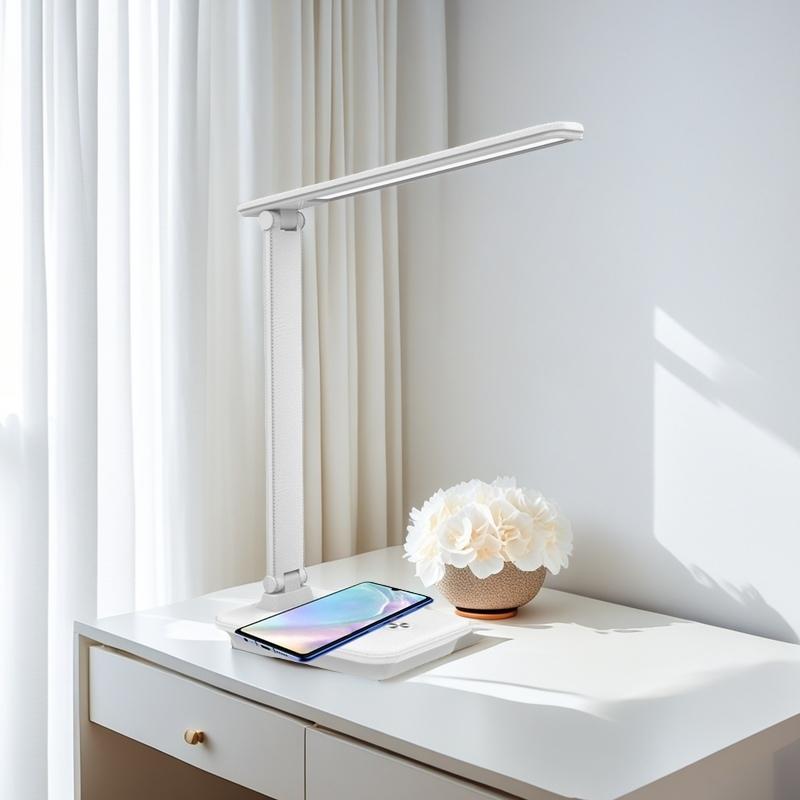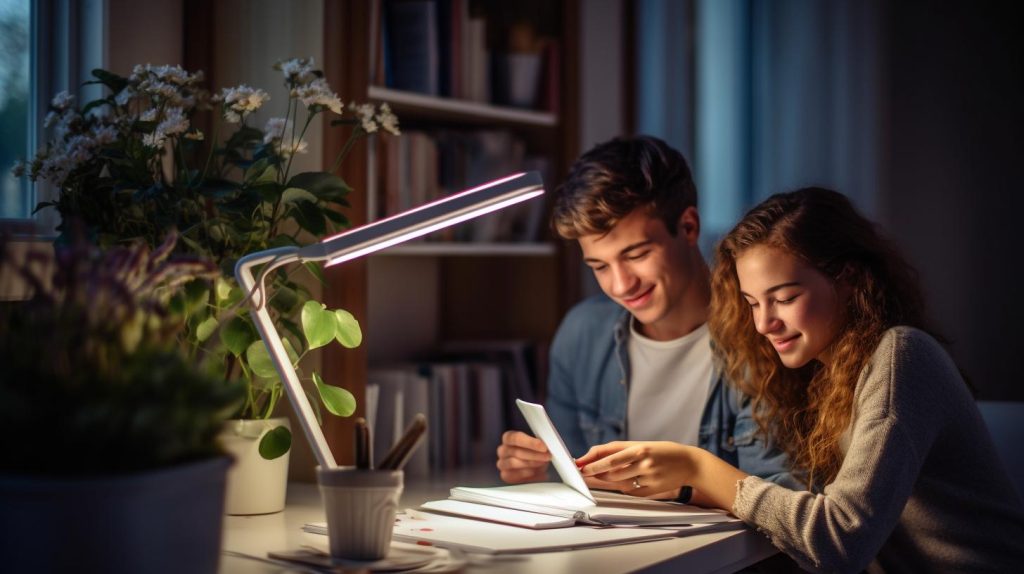Guangzhou Navi Technology: Your LED desk lamp expert
When you spend hours at your desk working or studying, a desk lamp is often a vital part of your workspace. However, have you ever wondered if your desk lamp could be harming your eyes? The truth is, the type of light source you use and how you use your desk lamp can make a significant difference to your eye health. In this article, we’ll dive into whether desk lamps are bad for your eyes, how to prevent eye strain, and what makes the best desk lamp for your eyes. If you want to keep your eyes healthy and avoid unnecessary strain, keep reading!
1. Are Desk Lamps Bad for Your Eyes?
Desk lamps are essential tools for reading, working, and studying, but when used improperly, they can lead to eye strain and discomfort. The main issue isn’t the desk lamp itself but the type of light source and how it’s used. Harsh, bright lights or improper positioning can cause your eyes to work harder, leading to fatigue and long-term discomfort. However, the right desk lamp for eye care can reduce eye strain and even help improve focus. To avoid harm, it’s important to choose the right desk lamp and ensure it’s properly set up. A good desk lamp for eye care offers adjustable brightness and a suitable color temperature for different tasks.
2. How Does Eye Strain Occur from Desk Lamps?
Eye strain is a common issue for those who spend long hours working under artificial lighting. When it comes to desk lamps, the following factors can contribute to eye strain:
- Excessive Brightness: If the lamp is too bright, it can overwhelm your eyes, causing them to squint and work harder to adjust.
- Inadequate Lighting: If the desk lamp is too dim, your eyes will have to work extra hard to focus on tasks, leading to fatigue.
- Glare: Direct light hitting your eyes or reflecting off your computer screen can cause discomfort and strain.
To avoid eye strain, choose a desk lamp that offers customizable brightness and can be adjusted to suit your specific tasks.
3. Is Blue Light from LED Desk Lamps Harmful to Your Eyes?
One of the most common concerns surrounding LED desk lamps is the blue light they emit. Blue light is known to contribute to eye strain and may disrupt sleep patterns. However, blue light exposure from LED desk lamps is generally not harmful in moderation. The primary concern arises from prolonged exposure, especially during late hours. LED desk lamps tend to have a higher amount of blue light compared to other lighting sources. For those sensitive to blue light, it’s recommended to either use lamps with blue light filters or switch to warmer light during the evening. Some LED desk lamps come with adjustable settings that allow you to reduce blue light exposure, making them more eye-friendly.
4. What Makes a Desk Lamp Eye-Caring?
An eye-caring desk lamp is specifically designed to reduce strain on your eyes while providing optimal lighting for work. Key features to look for in an eye-caring desk lamp include:
- Adjustable Brightness: Customizable lighting helps you find the perfect intensity to reduce strain.
- Adjustable Color Temperature: The ability to change the color temperature from warm (for relaxation) to cool (for focus) allows you to tailor the light to your task.
- Anti-Glare Technology: A lamp that diffuses light or uses a special lens can prevent harsh glare, which is one of the main causes of eye discomfort.
- Flicker-Free Design: Flickering light sources can cause eye strain over time. An eye-caring desk lamp ensures consistent, flicker-free light.
By investing in a lamp with these features, you can prevent eye problems and reduce the risk of eye strain.
5. Why LED Desk Lamps Are Better for Your Eyes
While traditional incandescent and fluorescent lamps have their drawbacks, LED desk lamps offer several benefits for your eyes:
- Energy Efficiency: LED lights consume less power and produce less heat, making them more comfortable for long-term use.
- Longer Lifespan: LED bulbs last much longer than incandescent bulbs, which means fewer replacements and less hassle.
- Reduced Glare: Many LED desk lamps are designed to reduce glare, making them less likely to contribute to eye strain.
- Customizable Lighting: Many LED desk lamps offer adjustable brightness and color temperature settings, allowing you to create the ideal lighting environment for your eyes.
Overall, LED desk lamps are a great investment if you’re looking for a reliable and eye-caring light source for your workspace.
For details, please refer to NaviLighting
6. How to Choose the Best Desk Lamp to Reduce Eye Strain
When selecting the best desk lamp for your eyes, there are several important factors to consider:
- Brightness Control: Choose a desk lamp with adjustable brightness levels so you can customize the light intensity based on your task.
- Color Temperature: Look for a desk lamp with adjustable color temperatures to suit different activities. Warmer light (2700K-3000K) is ideal for relaxation, while cooler light (5000K-6500K) helps with focus and productivity.
- Positioning and Flexibility: A lamp with adjustable arms or a rotating head allows you to direct light exactly where you need it, minimizing glare and shadows.
- Blue Light Protection: If you’re concerned about blue light, opt for a desk lamp that has a built-in blue light filter.
By choosing a desk lamp with these features, you can reduce eye strain and create a more comfortable working environment.
7. How Desk Lamp Glare Affects Your Eyes
Glare is a significant issue when using desk lamps, especially if the light is directed at your eyes or reflected off nearby surfaces like a computer screen. The bright light makes your eyes work harder, causing discomfort and strain. To avoid glare, consider the following:
- Position the Lamp Properly: Ensure the desk lamp is positioned at an angle where it doesn’t shine directly into your eyes or create reflections on your screen.
- Use a Diffused Light Source: Many LED desk lamps come with diffusers or adjustable heads that help spread the light evenly, reducing harsh reflections.
By reducing glare, you can minimize eye strain and make your workspace more comfortable.
8. What Type of Desk Lamp is Best for Eye Health?
The best desk lamp for eye health depends on your specific needs, but the following factors are essential:
- LED Desk Lamps: These are generally the best option due to their energy efficiency, long lifespan, and customizable lighting options.
- Task Lighting: Desk lamps designed specifically for reading or close-up tasks are perfect for minimizing strain.
- Adjustable Lamps: Desk lamps with flexible arms or adjustable heads allow you to direct light exactly where you need it, avoiding glare and creating an even distribution of light.
Look for desk lamps that combine these features to ensure the best protection for your eyes.
For further insights and product options, explore NaviLighting from Guangzhou Navi Technology Co. Ltd.
9. Can Desk Lamps Prevent Eye Problems?
When used correctly, desk lamps can actually help prevent eye problems by providing consistent and comfortable lighting. Some of the ways desk lamps can prevent eye strain include:
- Optimizing Light Conditions: Properly adjusting the brightness and color temperature can reduce the need for your eyes to work overtime.
- Reducing Glare and Shadows: By positioning your desk lamp to eliminate glare, you can improve visual comfort and reduce fatigue.
- Flicker-Free Lighting: Choosing a flicker-free desk lamp will ensure that the light doesn’t contribute to strain, especially over long hours of use.
The right desk lamp can prevent many common eye problems and promote a healthier working environment.
10. How to Prevent Eye Strain When Using Desk Lamps
To minimize eye strain when using a desk lamp, follow these tips:
- Take Regular Breaks: Follow the 20-20-20 rule: every 20 minutes, look at something 20 feet away for at least 20 seconds.
- Adjust the Lamp’s Position: Ensure that your desk lamp is positioned correctly to avoid glare and shadows. A good position is typically at a 45-degree angle from your eyes.
- Use Blue Light Protection: If your lamp emits a lot of blue light, consider using a blue light filter or wearing glasses designed to block blue light.
- Adjust the Brightness and Color Temperature: Set the brightness and color temperature according to your task—warmer tones for reading, cooler ones for focus-intensive work.
By following these tips, you can use your desk lamp without worrying about eye strain or other discomforts.
Conclusion: Key Takeaways
- Desk lamps are not inherently bad for your eyes, but improper use or the wrong type of light can cause strain.
- Choose a desk lamp with adjustable brightness and color temperature to reduce eye strain.
- LED desk lamps are the best option for energy efficiency, long lifespan, and eye-friendly lighting.
- Ensure your desk lamp is positioned properly to avoid glare and blue light exposure.


